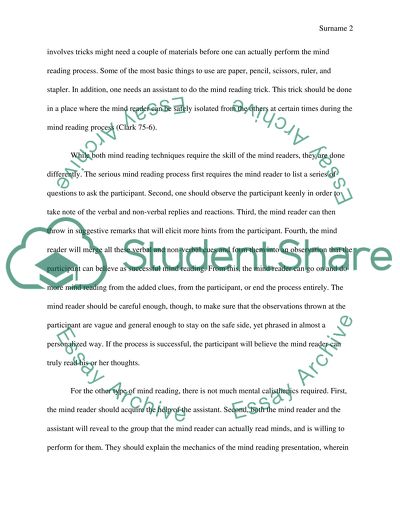Cite this document
(The Science and Tricks of Mind Reading Research Paper, n.d.)
The Science and Tricks of Mind Reading Research Paper. Retrieved from https://studentshare.org/psychology/1479476-process-essay-about-how-to-be-a-mind-reader
The Science and Tricks of Mind Reading Research Paper. Retrieved from https://studentshare.org/psychology/1479476-process-essay-about-how-to-be-a-mind-reader
(The Science and Tricks of Mind Reading Research Paper)
The Science and Tricks of Mind Reading Research Paper. https://studentshare.org/psychology/1479476-process-essay-about-how-to-be-a-mind-reader.
The Science and Tricks of Mind Reading Research Paper. https://studentshare.org/psychology/1479476-process-essay-about-how-to-be-a-mind-reader.
“The Science and Tricks of Mind Reading Research Paper”, n.d. https://studentshare.org/psychology/1479476-process-essay-about-how-to-be-a-mind-reader.


